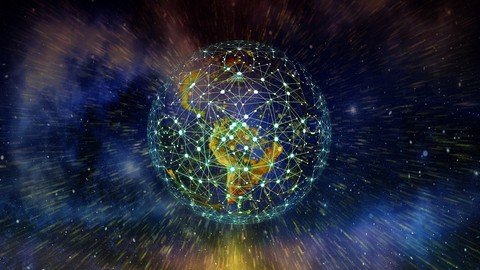
Published 1/2023
MP4 | Video: h264, 1280×720 | Audio: AAC, 44.1 KHz
Language: English | Size: 594.76 MB | Duration: 2h 3m
Learn Data Science, Data Analysis and Machine Learning with Numpy, Pandas, Matplotlib, Scikit-Learn and Python
What you’ll learn
Data Science with Python
Machine Learning with Python
Data Science libraries such as Numpy, Pandas, Matplotlib, Scikit-Learn
Supervised Learning and Unsupervised Learning
Data Manipulation with pandas
Different charts such as Line Charts, Bar Charts with Matplotlib
Recognizing Handwritten Digits Project with Scikit-Learn
Python Programming Language
Data Analysis
Data Visualization
Requirements
No previous experience required!
Description
Data science is an interdisciplinary branch of study that employs statistics, scientific computers, scientific techniques, procedures, algorithms, and systems to extract or infer information and insights from noisy, structured, and unstructured data. Data science also combines domain knowledge from the underlying application domain (e.g., natural sciences, information technology, health) (e.g., natural sciences, information technology, medicine). Data science has several facets and may be regarded as a science, a research paradigm, a research technique, a field, a workflow, and a career. Data science is a “concept that unifies statistics, data analysis, informatics, and their associated approaches” to “understand and analyse actual events” using data.It employs techniques and theories borrowed from several domains within the framework of mathematics, statistics, computer science, information science, and domain knowledge. Data science, however, is distinct from computer science and information science. Jim Gray, recipient of the Turing Award, envisioned data science as the “fourth paradigm” of research (empirical, theoretical, computational, and now data-driven) and said that “everything about science is changing as a result of the effect of information technology” and the data flood. A data scientist is someone who produces computer code and combines it with statistical understanding to gain insights from data.Data science is a multidisciplinary field concerned with the extraction of knowledge from generally enormous data sets and the application of that knowledge and insights to the solution of problems in a broad variety of application fields.Data science include preparing data for analysis, defining data science challenges, analysing data, building data-driven solutions, and presenting findings to support high-level choices across a wide variety of application fields. As such, it includes abilities from computer science, statistics, information science, mathematics, data visualisation, data sonification, data integration, graphic design, complex systems, communication, and business. Statistician Nathan Yau, building on the work of Ben Fry, also relates data science to human–computer interaction, arguing that users must be able to manipulate and study data intuitively. The American Statistical Association recognised database administration, statistics and machine learning, and distributed and parallel systems as the three developing basic professional groups in 2015.
Overview
Section 1: Introduction to Numpy Library
Lecture 1 Ndarray
Lecture 2 Create an Array
Lecture 3 Type of Data and dtype option
Lecture 4 Creation of an Array Intrinsically
Lecture 5 Basic Operations in Numpy-Arithmetic Operation
Lecture 6 Matrix product and increment decrement
Lecture 7 Universal and Aggregate Functions
Lecture 8 Indexing
Lecture 9 Slicing
Lecture 10 Iterating an Array
Lecture 11 Dataframe transposition and the Index
Lecture 12 Shape Manipulation
Lecture 13 Joining and Splitting Arrays
Lecture 14 Objects of copies or views and vectors
Lecture 15 Broadcasting
Lecture 16 Structuring of an Array
Section 2: Introduction to Pandas Library
Lecture 17 Data structures of pandas series
Lecture 18 Internal element select, value assigning
Lecture 19 Filter of values, math operations, value
Lecture 20 NaN Values
Lecture 21 Series as Dictionaries and operations
Lecture 22 Defining a DataFrame
Lecture 23 Element Selection
Lecture 24 Assigning Values
People who want to learn Data Science with Python,People who want to learn Machine Learning with Python
Password/解压密码www.tbtos.com
转载请注明:0daytown » Learn Data Science And Machine Learning With Python